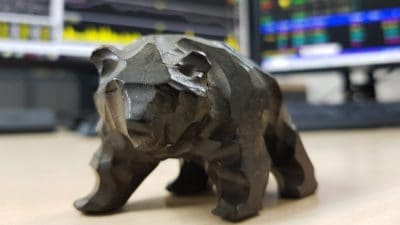Since Tufan Erginbilgiç became CEO of Rolls-Royce (LSE: RR) on 1 January 2023 its share price has surged 520%.
Some investors may assume there is no point in buying the stock now as it has already risen so much. Others might believe they must buy the stock as such momentum must surely be sustained.
In my experience as a former investment bank trader, neither view is conducive to achieving consistently high returns.
I am only interested in how much value is left in the shares.
Two key valuation approaches
My first stage in unearthing this value is to compare the stock’s core valuation measures against similar stocks.
On the price-to-earnings (P/E) ratio, Rolls-Royce currently trades at 20.6. The average of its competitor group is 32.1, so it looks very undervalued on this benchmark. Its peer group comprises BAE Systems at 18.7, Northrop Grumman at 28.8, RTX at 32.6, and TransDigm at 48.1.
It also looks very cheap on the price-to-sales (P/S) ratio – at 2.7 against a peer average of 3.5.
The second part of my approach is to ascertain what the shares are worth based on future cash flow forecasts. I do this by running a discounted cash flow analysis.
The one for Rolls-Royce shows its shares are technically 49% undervalued at their current price of £5.77. So, the fair value for the stock is £11.31.
It may go lower or higher than this, given the unpredictability of the market. But it underlines to me how much value could be left in the stock despite its rise since 2023.
How does the core business look to me?
The major risk I see for the firm is any major failure in one of its key products. This would be very expensive to fix and could damage its long-term reputation.
However, as it stands, the overall news flow relating to Rolls-Royce’s developments has looked strong to me.
It is now rated in the elite ‘investment grade’ of firms by the three major global credit rating agencies. This will continue to allow it access to cheaper financing for expansion than lesser-rated firms can obtain.
Additionally, it continues to announce major new projects. The latest was EuroJet Turbo’s 23 December announcement of an agreement to provide 59 new EJ200 engines for the Spanish Air Force. The EJ200 engine is a collaboration between Rolls-Royce, MTU Aero Engines, ITP Aero and Avio Aero.
Overall, Rolls-Royce forecasts underlying operating profit of £2.5bn-£2.8bn by 2027 and free cash flow of £2.8bn-£3.1bn by then. It expects underlying operating profit of £2.1bn-£2.3bn and free cash flow of £2.1bn-£2.2bn in full-year 2024.
Will I buy the stock?
I am in the later phase of my investment cycle and focusing on stocks that pay very high yields. I aim to maximise these so that I can continue to reduce my working commitments. Rolls-Royce currently does not pay a dividend but has indicated it will do so at some point.
However, if I were even 10 years younger, nothing could prevent me from buying Rolls-Royce shares (provided I had the money). I think the firm will see enormous growth in the coming years. This should drive its share price much higher and enable it to reinstate a good dividend, as it intends.








